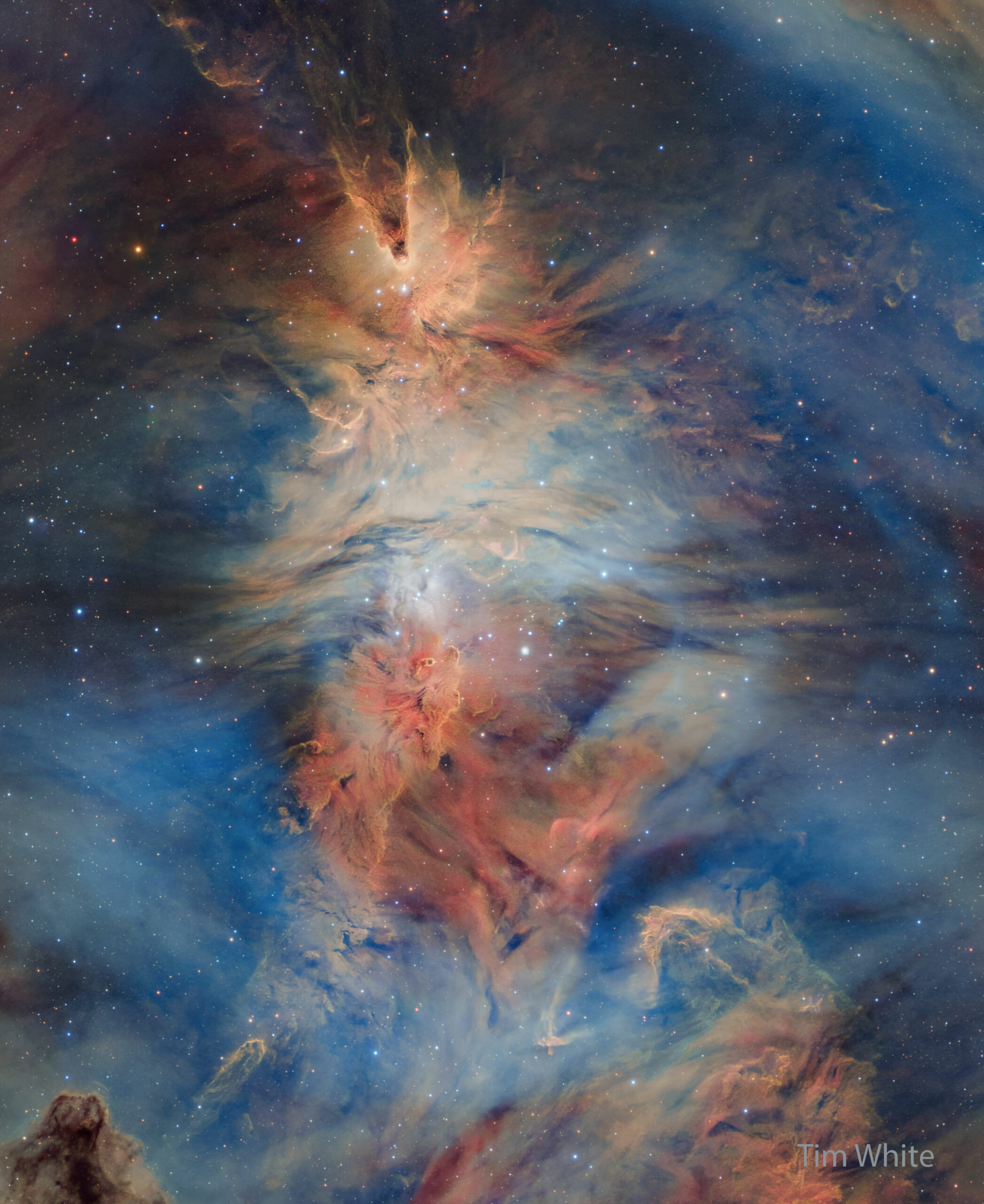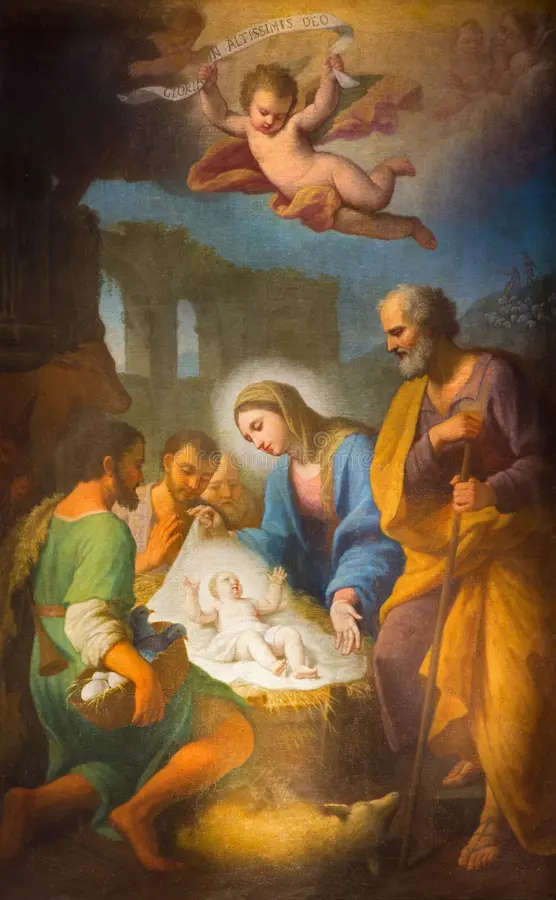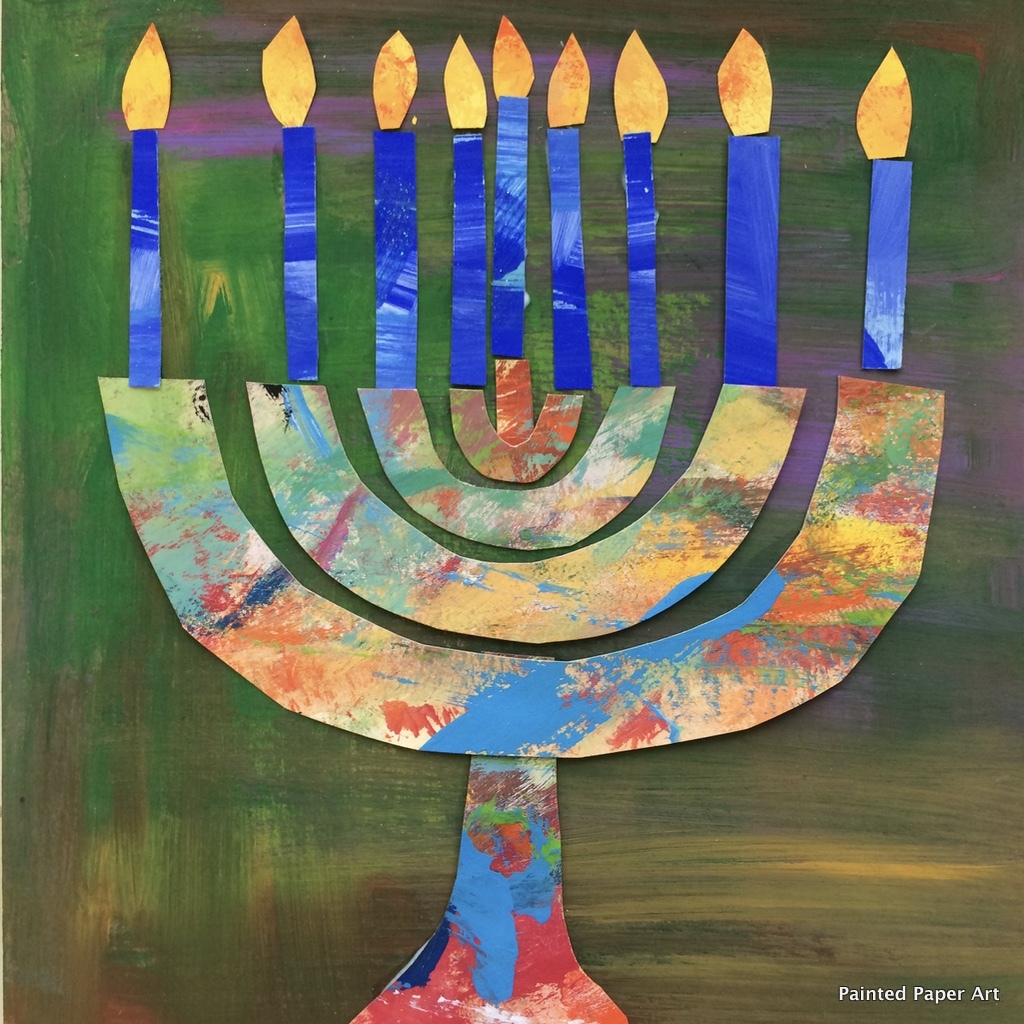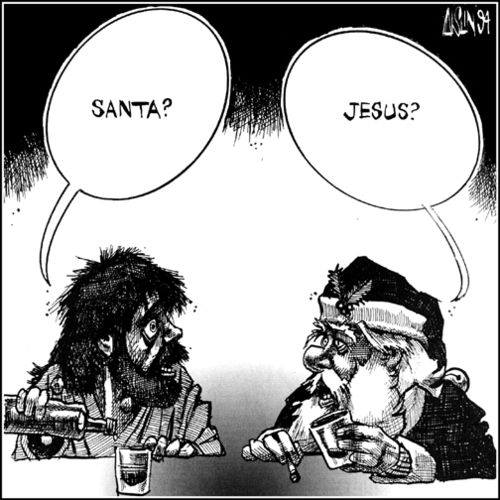Blog
Considered as a star forming region and cataloged as NGC 2264, the complex jumble of cosmic gas and dust is about 2,700 light-years distant and mixes reddish emission nebulae excited by energetic light from newborn stars with dark interstellar dust clouds. The featured image spans an angle larger than a full moon, covering over 50 light-years at the distance of NGC 2264. Its cast of cosmic characters includes the Fox Fur Nebula, whose convoluted pelt lies just to the left of the image center, bright variable star S Monvisible just to the right of the Fox Fur, and the Cone Nebula near the image top. With the Cone Nebula at the peak, the shape of the general glow of the region give it the nickname of the Christmas Tree Cluster, where stars are tree ornaments.

Christophe Kenner (December 25, 1929 – January 25, 1976) was an American, New Orleans–based R&Bsinger and songwriter, best known for two hit singles in the early 1960s, “I Like It Like That” and “Land of 1000 Dances“, which became staples in the repertoires of many other musicians.
Born on Christmas Day, in the farming community of Kenner, Louisiana, upriver from New Orleans,Kenner sang gospel music with his church choir. He moved to New Orleans when he was in his teens, to work as a stevedore.
In 1955 he made his first recordings, for a small label, Baton Records, without success. In 1957, he recorded his “Sick and Tired” for Imperial Records. Kenner’s recording reached No. 13 on the BillboardR&B chart. Fats Domino covered it the next year, and his version became a hit on the pop chart.“Rocket to the Moon” and “Life Is Just a Struggle”, both cut for Ron Records, were other notable songs Kenner recorded in this period.
more...Oscar Frederic Moore (December 25, 1916 – October 8, 1981) was an American jazz guitarist with the Nat King Cole Trio.
The son of a blacksmith, Moore was born in Austin, Texas, United States. The Moore family moved to Phoenix, Arizona, where he began performing with his older brother Johnny, who played both trombone and guitar. After moving to Los Angeles, he participated in his first recording session for Decca as part of the Jones Boys Sing Band led and arranged by Leon René. The group attracted local attention on radio and in two short films for MGM directed by Buster Keaton. Soon after, Moore accompanied pianist Nat King Cole at the Swanee Inn in North La Brea, Hollywood. He spent ten years with Cole in the piano-guitar-bass trio format, that influenced Art Tatum, Oscar Peterson, Ahmad Jamal.
more...Don Gabriel Pullen (December 25, 1941 – April 22, 1995 Roanoke, VA) was an American jazz pianist and organist. Pullen developed a strikingly individual style throughout his career. He composed pieces ranging from blues to bebop and modern jazz. The great variety of his body of work makes it difficult to pigeonhole his musical style.
In 1964, he went to Chicago, Illinois, for a few weeks, where he encountered Muhal Richard Abrams‘ philosophy of making music. He then headed for New York, where he was soon introduced to avant-garde saxophonist Giuseppi Logan, who invited Pullen to play piano on his two albums, Giuseppi Logan(ESP, October 1964) and More (ESP, May 1965), both exercises in structured free playing.
Subsequently, Pullen and Milford Graves formed a duo. Their concert at Yale University in May 1966 was recorded. They formed their own independent SRP record label (standing for “Self Reliance Project”) to publish the result as two LPs. These were the first records to bear Pullen’s name, second to Graves’. Although not greatly known in the United States, these avant-garde albums were well received in Europe, most copies being sold there. In 2020, Corbett vs. Dempsey released the contents of both albums on a CD titled The Complete Yale Concert, 1966.
more...Cabell Calloway III (December 25, 1907 – November 18, 1994 Rochester, NY) was an American jazz singer and bandleader. He was a regular performer at the Cotton Club in Harlem, where he became a popular vocalist of the swing era. His niche of mixing jazz and vaudeville won him acclaim during a career that spanned over 65 years.
Calloway was a master of energetic scat singing and led one of the most popular dance bands in the United States from the early 1930s to the late 1940s. His band included trumpeters Dizzy Gillespie, Jonah Jones, and Adolphus “Doc” Cheatham, saxophonists Ben Webster and Leon “Chu” Berry, guitarist Danny Barker, bassist Milt Hinton, and drummer Cozy Cole.
Calloway had several hit records in the 1930s and 1940s, becoming the first African-American musician to sell one million copies of a record. He became known as the “Hi-de-ho” man of jazz for his most famous song, “Minnie the Moocher“, originally recorded in 1931. He reached the Billboard charts in five consecutive decades (1930s–1970s). Calloway also made several stage, film, and television appearances until his death in 1994 at the age of 86. He had roles in Stormy Weather (1943), Porgy and Bess (1953), The Cincinnati Kid (1965), and Hello Dolly! (1967). His career enjoyed a marked resurgence from his appearance in the 1980 film The Blues Brothers.
Calloway was the first African-American to have a nationally syndicated radio program.[5] In 1993, Calloway received the National Medal of Arts from the United States Congress. He posthumously received the Grammy Lifetime Achievement Award in 2008. His song “Minnie the Moocher” was inducted into the Grammy Hall of Fame in 1999, and added to the Library of Congress‘ National Recording Registry in 2019. In 2022, the National Film Registry selected his home films for preservation as “culturally, historically or aesthetically significant films”. He was inducted into the Big Band and Jazz Hall of Fame and the International Jazz Hall of Fame.
more...Mohammed Rafi (24 December 1924 – 31 July 1980) was an Indian playback singer. He is considered to have been one of the greatest and most influential singers of the Indian subcontinent. Rafi was notable for his versatility and range of voice; his songs varied from fast peppy numbers to patriotic songs, sad numbers to highly romantic songs, qawwalis to ghazals and bhajans to classical songs. He was known for his ability to mould his voice to the persona and style of the actor lip-syncing the song on screen in the movie. He received six Filmfare Awards and one National Film Award. In 1967, he was honored with the Padma Shri award by the Government of India. In 2001, Rafi was honoured with the “Best Singer of the Millennium” title by Hero Honda and Stardust magazine. In 2013, Rafi was voted for the Greatest Voice in Hindi Cinema in the CNN-IBN’s poll.
He recorded songs for over a thousand Hindi films and in many Indian languages as well as some foreign languages, though primarily in Urdu and Punjabi, over which he had a strong command. He recorded as many as 7,000 songs throughout his career, spanning several languages and dialects such as Konkani, Assamese, Bhojpuri, Odia, Bengali, Marathi, Sindhi, Kannada, Gujarati, Tamil, Telugu, Magahi, Maithili, etc. Apart from Indian languages, he also sang in some foreign languages, including English, Persian, Arabic, Sinhala, Mauritian Creole, and Dutch.
more...David Louis Bartholomew (December 24, 1918 – June 23, 2019) was an American musician, bandleader, composer, arranger, and record producer. He was prominent in the music of New Orleans throughout the second half of the 20th century. Originally a trumpeter, he was active in many musical genres, including rhythm and blues, big band, swing music, rock and roll, New Orleans jazz, and Dixieland. In his induction into the Rock and Roll Hall of Fame, he was cited as a key figure in the transition from jump blues and swing to R&B and as “one of the Crescent City’s greatest musicians and a true pioneer in the rock and roll revolution”.
Many musicians have recorded Bartholomew’s songs, but his partnership with Fats Domino produced some of his greatest successes. In the mid-1950s they wrote more than forty hits for Imperial Records, including the Billboard number one pop chart hit “Ain’t That a Shame“. Bartholomew’s other hit songs as a composer include “I Hear You Knocking“, “Blue Monday“, “I’m Walkin’“, “My Ding-a-Ling“, and “One Night“. He was a member of the Songwriters Hall of Fame, the Rock and Roll Hall of Fame, and the Louisiana Music Hall of Fame.
more...Irving Lee Dorsey (December 24, 1924 – December 1, 1986) was an American pop and R&B singer during the 1960s. His biggest hits were “Ya Ya” (1961) and “Working in the Coal Mine” (1966). Much of his work was produced by Allen Toussaint, with instrumental backing provided by the Meters.
Born in New Orleans, Louisiana, Dorsey was a childhood friend of Fats Domino. He moved to Portland, Oregon when he was ten years old. He served in the United States Navy in World War II and began a career in prizefighting. Boxing as a featherweight in Portland in the early 1950s, he fought under the name Kid Chocolate and was not successful, fighting only one time and being knocked out in the second round.He returned to New Orleans in 1955, where he opened an auto repair business as well as singing in clubs at night.
His first recording was “Rock Pretty Baby/Lonely Evening” on Cosimo Mattasa’s Rex label, in 1958. This was followed by “Lottie Mo/Lover of Love”, for the small Valiant label in late 1960 (picked up by ABC Paramount in 1961). These efforts were unsuccessful, but around 1960 he was discovered by A&R man Marshall Sehorn, who secured him a contract with Fury Records, owned by Bobby Robinson. After meeting songwriter and record producer Allen Toussaint at a party, he recorded “Ya Ya“, a song inspired by a group of children chanting nursery rhymes. It went to number seven on the Billboard Hot 100 in 1961, sold over one million copies, and was awarded a gold disc. Although the follow-up “Do-Re-Mi” also made the charts, later releases on Fury were not successful. Dorsey returned to running his repair business, but also released singles on the Smash and Constellation labels in 1963 and 1964.
more...Raphael Homer “Ray” Bryant (December 24, 1931 – June 2, 2011) was an American jazz pianist, composer, and arranger.
Bryant was born in Philadelphia, Pennsylvania, on December 24, 1931. His mother was an ordained minister who had taught herself to play the piano; his father also played the piano and sang. His brothers were the bass player Tommy, drummer and singer Len, and Lynwood. Ray began playing the piano around the age of six or seven, following the example of his mother and his sister, Vera. Gospel influences in his playing came from being part of the church at this stage in his early life. He had switched from classical music to jazz by his early teens and played the double bass at junior high school. He was first paid to play when he was 12: “I would play for dances, and they’d sneak me into bars. I’d get four or five bucks a night, which was good money then.” He turned professional aged 14, and immediately joined a local band led by Mickey Collins.
more...Warren “Baby” Dodds (December 24, 1898 – February 14, 1959) was an American jazz drummer born in New Orleans, Louisiana. He is regarded as one of the best jazz drummers of the pre-big band era. He varied his drum patterns with accents and flourishes, and he generally kept the beat with the bass drum while playing buzz rolls on the snare. Early influences included Louis Cottrell, Sr., Dave Perkins, and Tubby Hall. Dodds was among the first drummers to be recorded improvising while performing. In many of his recordings, Dodds had to use a wood block rather than a drum set because of the nature of the recording technology. It was therefore difficult to hear Dodds’ original style from early recordings, such as his 1923 sessions with King Oliver’s Creole Jazz Band. Dodds did, however, begin recording again in 1940, and by this time, the technology was able to show his talent on the drum set. Dodds is perhaps the first jazz drummer to record unaccompanied: in 1945 he recorded two solos for Circle Records, and the next year recorded a series of solos and reminiscences for Folkways Records. On his part of the record, Dodds discusses his drumming techniques and his drumset and playing examples of techniques. This record gives an idea of what Dodds would have sounded like in his prime had the recording technology been what it is today. In 1954, he played for a Natty Dominique recording session which also featured bassman Israel Crosby and pianist Lil Hardin Armstrong.
more...More Posts
- The Cosmos with C/2020 M3
- Neil Young
- Sam Jones
- Buck Clayton
- Bukka White
- World Music with Meriem Ben Amor
- Daily Roots with Don Campbell
- Happy Veterans Day 2020
- Surviving the Pandemic and Realizing Racial Justice
- The Cosmos with NGC 4036
- Hank Garland
- Ernestine Anderson
- Mose Allison
- World Music with Nation Beat
- Daily Roots with Tarrus Riley
- Surviving the Pandemic and Realizing Racial Justice
- The Cosmos with IC 1848
- Russell Means
- Big Chief Ellis
- Hubert Laws




